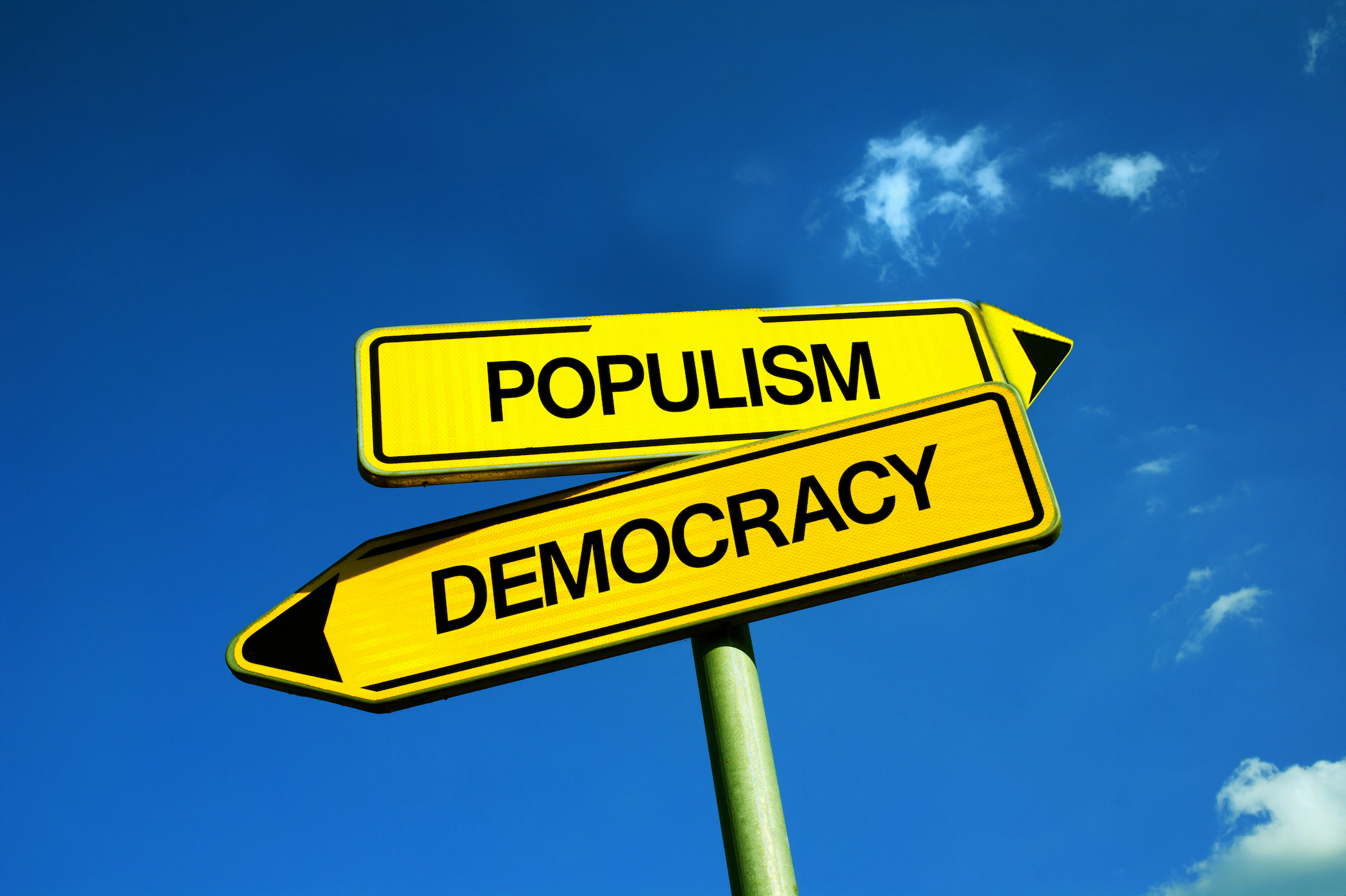Do we need leaders in a utopian society? However utopian a society may be, if there are humans, they will obviously form into groups and organisations. According to the study of Peter Ferdinand Drucker, an American management consultant, educator and author, if we put a group of people together what can naturally come out of them is friction, confusion, and underperformance; for anything more than this we need leaders. A group cannot self-direct itself. If we as a group need order, peace, success, etc. we need leaders. Rightly so every community and nation has leaders. Watching leaders of various nations in recent times makes us realise that every community and nation who has leaders does not necessarily end up having peace or genuine success and prosperity. Why?
Going Populist
‘I, me, and only myself’ approach is against democratic results. Narcissistic populist leaders make themselves into a cult of personality with ‘56-inch chest’ who occupy a place above the institutions of a country or community; and they use, abuse, and abolish institutions and facilities for their own end. They often forget that individual rights and aspirations for equality, fairness and free speech belong to everyone in a democracy as much they belong to them. Political analysts say that populist authoritarian regimes emerge as a result of a demand from below. There is little trust and cohesiveness among social groups in countries that so obviously identify victors and losers, respectable and indecent in the political, economic, social, an religious do- mains. Psychologically speaking, this fosters anti-establishment and populist feeling that stem from an unfulfilled demand for status and affiliation, especially among the “losing” group. These people are often dissatisfied and alienated from political processes; populist leaders step up and fill the gap left by other political elites, they put out the figure of a providential leader who will be able to restore a nation to great- ness. They emerge with heightened patriotism, mass demonstrations & road shows, distortions of truth and history, and with slogans like, ‘make America great again, or ‘Aache din aane wale hain’.
Crystal Cordell says that populist leaders offer easy and instant solutions to complex issues, without considering the complexities of the issues at hand, which would undermine sensitivities, modernity, and social sciences. Populists propose solutions that are backward looking, like, withdrawal from international institutions and collaborations to protect their people from increased competitions or cultural challenges from a globalised world. They play to the gallery.
Back in his days, the Greek philosopher Socrates warned the people of the danger of demagogues who flatter the people. Cleon, the first prominent and popular representative of the commercial class in Athenian politics, perhaps democracy’s first demagogue, was supposed to be the first one who shouted on the public platform, who in his oratory used abusive language and who spoke with his cloak girt about him. He aspired to be the master of the masses, appealing to their emotions and biases while pulling off a variety of tricks designed to captivate large crowds. A demagogue, ac- cording to political scientist James Ceaser, is someone who “leads by inflammatory appeals or by flattery and who proceeds to build personal popularity without concern for promoting the public good.” The real danger arises when a gifted leader uses those techniques to advance his pursuit of unbridled power. He will be successful in destroying the nation or community.
Think about the best leaders that you ever worked with? What did they do or say that inspired you? Is it their lying, yelling, forcing, not allowing you to speak up, etc? or is it their gentle ways that brought the best out of you: made you a little more courageous, a little more comfortable, people who harnessed the better side of you?
Politicising Public Spheres and Events
People need visibility to grow popular. They would crave for and snatch every opportunity to be seen by others. Every event and affair they conduct would be treated as the group’s opportunity to gain visibility and limelight. They would also make sure others or people who question, confront, or have an alternative point of view are not seen in their events, or if they happen to be there, they are made to look irrelevant and unimportant. Populist leaders use every happening platforms, from Covid-19 vaccination to cricket matches, for their visibility and lobbying. Not so long ago The Wire had reported that a cricket match played in Narendra Modi Stadium, Ahmedabad, seemed more like a political rally than a cricket match. As a Gujarati newspaper Divya Bhaskar had reported, 80,000 tickets were purchased by the BJP men and women them- selves in various points and cohorts. The stadium seats about 1,30,000 people.
In conclusion, we are in a populist era. The politicisation of the public sphere and non-political agencies continues to jeopardise the governance and management of institutions. Heads of independent institutes hold positions but are powerless puppets. Leaders (religious, corporate, and political) bend and break independent and self-governing bodies, events and affairs to serve their ends.
Small men with disproportionately big public images are like ‘small men casting long shadows’; and the shadows becoming bigger ‘is a sure sign that the sun is about to set.’
Written as TOGETHER editorial.

Comments
Post a Comment